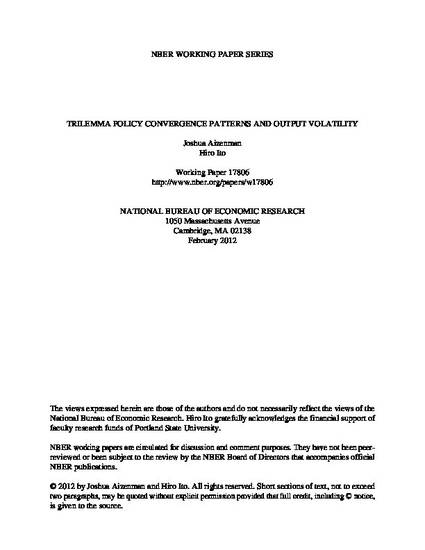
- Impossible trinity,
- International reserves,
- Financial liberalization,
- Exchange rate regime
We examine the open macroeconomic policy choices of developing economies from the perspective of the economic “trilemma” hypothesis. We construct an index of divergence of the three trilemma policy choices, and evaluate its patterns in recent decades. We find that the three dimensions of the trilemma configurations are converging towards a “middle ground” among emerging market economies -- managed exchange rate flexibility underpinned by sizable holdings of international reserves, intermediate levels of monetary independence, and controlled financial integration. Emerging market economies with more converged policy choices tend to experience smaller output volatility in the last two decades. Emerging markets with relatively low international reserves/GDP could experience higher levels of output volatility when they choose a policy combination with a greater degree of policy divergence. Yet this heightened output volatility effect does not apply to economies with relatively high international reserves/GDP holding.

NBER Working Paper No. 17806. Subsequently published in the North American Journal of Economics and Finance, Volume 23, Issue 3, December 2012, Pages 269–285 (December 2012). Available at https://doi.org/10.1016/j.najef.2012.03.002.